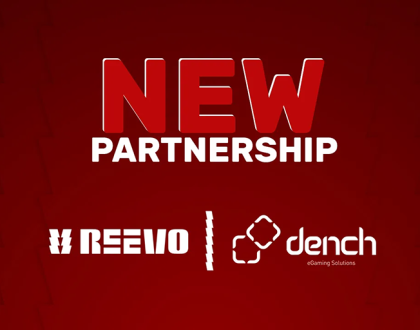How to Develop a Content Marketing Strategy to Increase Brand Awareness and Establish Thought Leadership

In today’s digital age, developing a content marketing strategy has become an essential component of building a successful brand. Content marketing is a powerful tool that allows you to establish thought leadership, increase brand awareness, and ultimately drive more revenue for your business. However, developing a successful content marketing strategy can be challenging, especially for those who are just starting out. In this article, we’ll explore the steps you can take to create a content marketing strategy that will help you achieve your business goals.
Introduction
A content marketing strategy is a plan for creating and distributing valuable, relevant, and consistent content to attract and retain a clearly defined audience — and, ultimately, to drive profitable customer action. The goal of a content marketing strategy is to create a relationship with your audience by providing them with valuable information that helps them solve problems or achieve their goals.
Define Your Objectives
The first step in developing a content marketing strategy is to define your objectives. What do you want to achieve with your content marketing efforts? Do you want to increase brand awareness, drive traffic to your website, generate leads, or establish thought leadership in your industry?
Identify Your Target Audience
The next step is to identify your target audience. Who are you trying to reach with your content? What are their pain points and challenges? What type of content do they prefer to consume? Understanding your target audience is crucial to creating content that resonates with them.
Conduct a Content Audit
Before you start creating new content, it’s important to take stock of what you already have. Conduct a content audit to identify what content you have, what’s performing well, and what gaps you need to fill.
Define Your Content Mix
Once you know what content you have, it’s time to define your content mix. Your content mix should be a balance of different types of content, such as blog posts, videos, infographics, and social media posts. Your content mix should also align with your business objectives and target audience.
Develop a Content Calendar
Creating a content calendar is an essential part of any content marketing strategy. A content calendar helps you plan and organize your content, ensuring that you’re publishing content consistently and on schedule.
Create Your Content
Now that you have a plan in place, it’s time to start creating content. When creating content, it’s important to focus on quality over quantity. Your content should be valuable, relevant, and engaging to your target audience.
Promote Your Content
Creating great content is just the first step. To get your content in front of your target audience, you need to promote it. There are many ways to promote your content, such as social media, email marketing, and paid advertising.
Measure Your Results
To determine the success of your content marketing efforts, you need to measure your results. Use analytics tools to track metrics such as website traffic, engagement, and conversions.
Analyze Your Data
Once you have collected data, it’s time to analyze it. Look for patterns and trends that can help you refine your content marketing strategy.
Refine Your Strategy
Based on your data analysis, you can refine your content marketing strategy. This might involve tweaking your content mix, adjusting your promotion tactics, or focusing on specific topics or themes.
Establish Thought Leadership
One of the key benefits of content marketing is the ability to establish thought leadership in your industry. To establish thought leadership, focus on creating high-quality, in-depth content that addresses key challenges and trends in your industry.
Increase Brand Awareness
Another key benefit of content marketing is the ability to increase brand awareness. To do this, create content that aligns with your brand messaging and values, and promote it through multiple channels.
Drive Revenue
While brand awareness and thought leadership are important, the ultimate goal of content marketing is to drive revenue. To do this, focus on creating content that addresses your target audience’s pain points and challenges, and drive them to take action.
Conclusion
Developing a successful content marketing strategy takes time, effort, and patience. By defining your objectives, identifying your target audience, and creating valuable content that resonates with your audience, you can establish thought leadership, increase brand awareness, and ultimately drive more revenue for your business.
FAQ
- What is a content marketing strategy?
A content marketing strategy is a plan for creating and distributing valuable, relevant, and consistent content to attract and retain a clearly defined audience — and, ultimately, to drive profitable customer action. - Why is content marketing important?
Content marketing is important because it allows you to establish thought leadership, increase brand awareness, and ultimately drive more revenue for your business. - How do I identify my target audience?
To identify your target audience, ask yourself who you are trying to reach with your content. What are their pain points and challenges? What type of content do they prefer to consume? - What is a content audit?
A content audit is the process of evaluating your existing content to identify what content you have, what’s performing well, and what gaps you need to fill. - How do I measure the success of my content marketing efforts?
To measure the success of your content marketing efforts, use analytics tools to track metrics such as website traffic, engagement, and conversions. - What are the benefits of establishing thought leadership?
Establishing thought leadership can help you build trust and credibility with your target audience, which can lead to increased brand awareness, improved reputation, and more revenue for your business. - How can I create high-quality content that resonates with my target audience?
To create high-quality content that resonates with your target audience, focus on addressing their pain points and challenges, providing valuable insights and solutions, and using a tone and style that aligns with your brand voice and values. - What are some best practices for content creation?
Some best practices for content creation include conducting research on your target audience, focusing on quality over quantity, using visuals and multimedia to enhance your content, and optimizing your content for search engines. - How can I promote my content effectively?
To promote your content effectively, use a mix of channels such as social media, email marketing, and paid advertising, and focus on targeting your content to the right audience through keyword research and segmentation. - How can I ensure consistency in my content marketing efforts?
To ensure consistency in your content marketing efforts, create a content calendar and plan ahead for upcoming content, establish brand guidelines and voice, and make sure to track and analyze your results regularly to refine your strategy. - How can I create content that drives customer action?
To create content that drives customer action, focus on addressing your target audience’s pain points and challenges, providing valuable insights and solutions, and including clear calls-to-action that encourage them to take the desired action. - What are some common mistakes to avoid when developing a content marketing strategy?
Some common mistakes to avoid when developing a content marketing strategy include focusing too much on promoting your brand or products, neglecting to conduct research on your target audience, and failing to track and analyze your results regularly. - How can I optimize my content for search engines?
To optimize your content for search engines, focus on including relevant keywords in your content and metadata, creating high-quality content that aligns with search intent, and ensuring that your website is well-structured and user-friendly. - How can I measure the ROI of my content marketing efforts?
To measure the ROI of your content marketing efforts, track metrics such as website traffic, engagement, and conversions, and use analytics tools to calculate the cost and revenue generated from your content marketing efforts. - How can I ensure that my content is valuable and relevant to my target audience?
To ensure that your content is valuable and relevant to your target audience, conduct research on their pain points and challenges, use a tone and style that resonates with them, and provide insights and solutions that align with their needs and interests. - How can I establish thought leadership through content marketing?
To establish thought leadership through content marketing, focus on creating high-quality, in-depth content that addresses key challenges and trends in your industry, sharing insights and perspectives that showcase your expertise, and building relationships with other thought leaders in your field.
- How often should I publish new content?
The frequency of your content publishing should depend on your goals, resources, and audience. However, it’s important to prioritize quality over quantity and ensure that your content provides value to your target audience. - What are some effective ways to distribute my content?
Some effective ways to distribute your content include sharing it on social media, leveraging email marketing, using paid advertising, and collaborating with influencers or other brands. - How can I repurpose my existing content?
To repurpose your existing content, consider turning blog posts into videos or podcasts, creating infographics or slide decks, or compiling a series of blog posts into an e-book or whitepaper. - How can I stay up-to-date with the latest content marketing trends and best practices?
To stay up-to-date with the latest content marketing trends and best practices, consider attending industry events or webinars, subscribing to relevant publications or blogs, and networking with other professionals in your field.
Esther
I am a professional writer with 8 years of experience in this field and I can provide you with the best-written content you can find. Education B.A. - English, George Washington University, United States, Graduated 2011.
Recommended Posts

REEVO Partners with Dench eGaming Solutions
May 20, 2024

Overview of Business Finance in Malta
May 17, 2024

How to Start Your Malta Business Journey
May 17, 2024




